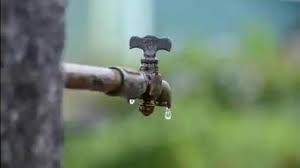


The Jal Jeevan Mission (JJM), a national program launched by the Indian Government in 2019, aspires to provide all rural houses with safe and adequate drinking water through individual tap connections by next year. Achieving this goal could prevent almost 400,000 diarrhoeal disease deaths, according to a new study by the World Health Organization (WHO).
The Ministry of Drinking Water and Sanitation requested the WHO to conduct the study to assess potential health benefits and associated cost savings related to enhanced access to safely-managed drinking water services in India. The research found that if JJM successfully provides safely-managed drinking water across the country, it could avert almost 400,000 diarrhoeal disease deaths.
Currently, official figures indicate that 62% of rural households have been provided with tap water connections. The study also suggested that, with universal access to safely-managed drinking water in India, nearly 14 million Disability-Adjusted Life Years (DALYs) due to diarrhoeal disease could be averted, resulting in estimated cost savings of up to USD 101 billion.
Moreover, the study highlighted the significant time saved on water collection (66.6 million hours each day), particularly for women, as a result of providing each household with a tap connection.
Richard Johnston, co-lead of the WHO/UNICEF Joint Monitoring Programme for Water Supply, Sanitation and Hygiene, emphasised the global significance of India’s efforts. He said, “If the world achieves its Sustainable Development Goals (SDG) targets for drinking water and sanitation, it will be due to India. India’s commitments and investments are demonstrating what’s possible due to its population and size.”
Dr. Rajiv Bahl, Director General of the Indian Council of Medical Research, considers these findings plausible, stating, “These are gross underestimates of the total benefits of providing safe water.
These benefits extend beyond health, affecting many communicable and non-communicable diseases, and even malnutrition. These are all related to water, so we must consider these as modest assumptions and just the tip of the iceberg.”
The WHO used comparative risk assessment (CRA) methods to estimate health impacts, comparing two scenarios: the JJM scenario, which assumes coverage of safely-managed drinking water services in India increases linearly to 100% at the program’s end, and the business-as-usual scenario, which anticipates improvements in coverage rates at historical annual rates of 0.5 percentage point change per year.
The study’s economic analysis valued each DALY averted from the JJM initiative at three times the GDP per capita, a method described in the 2001 report of the WHO’s Commission on Macroeconomics and Health.